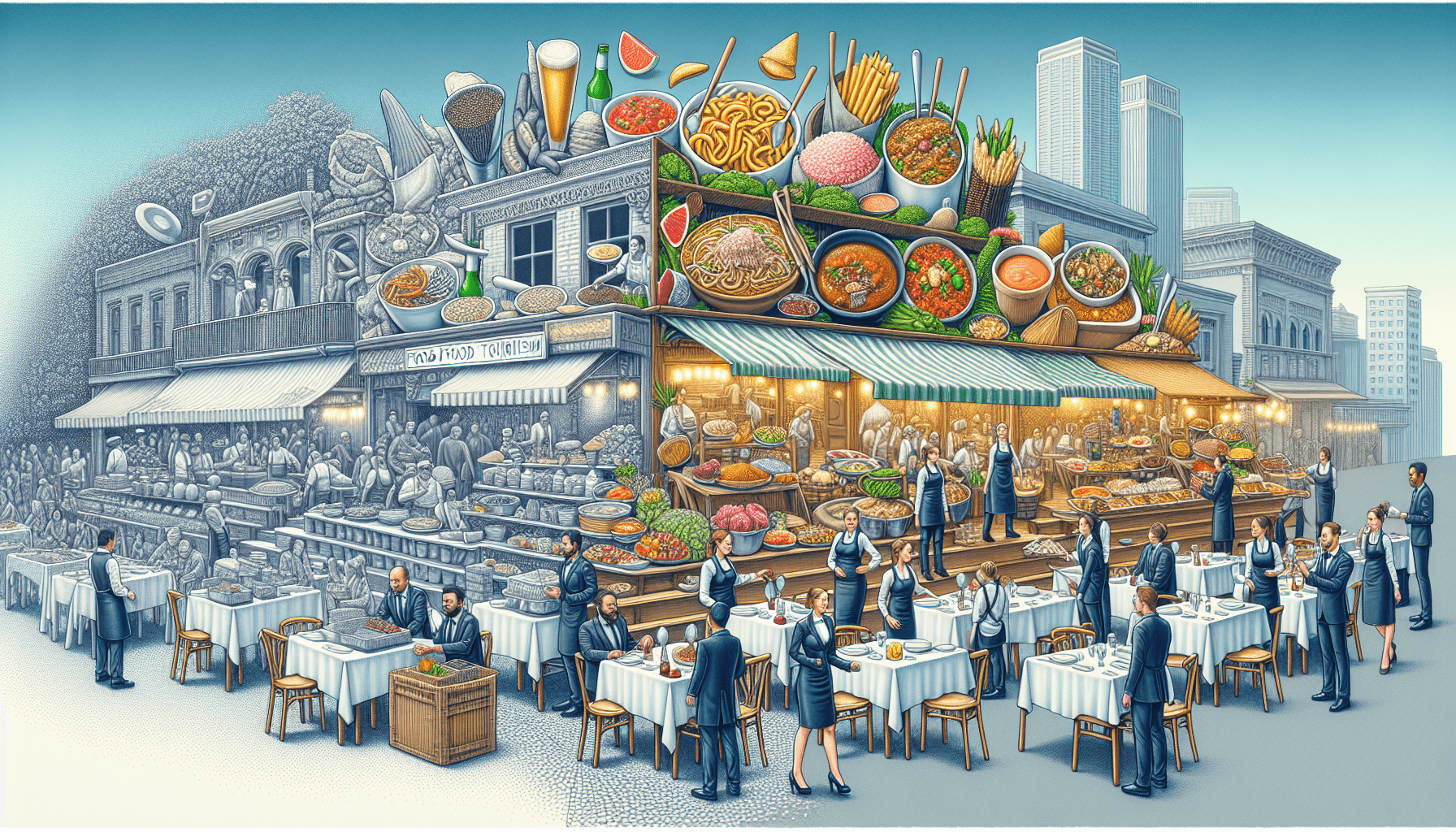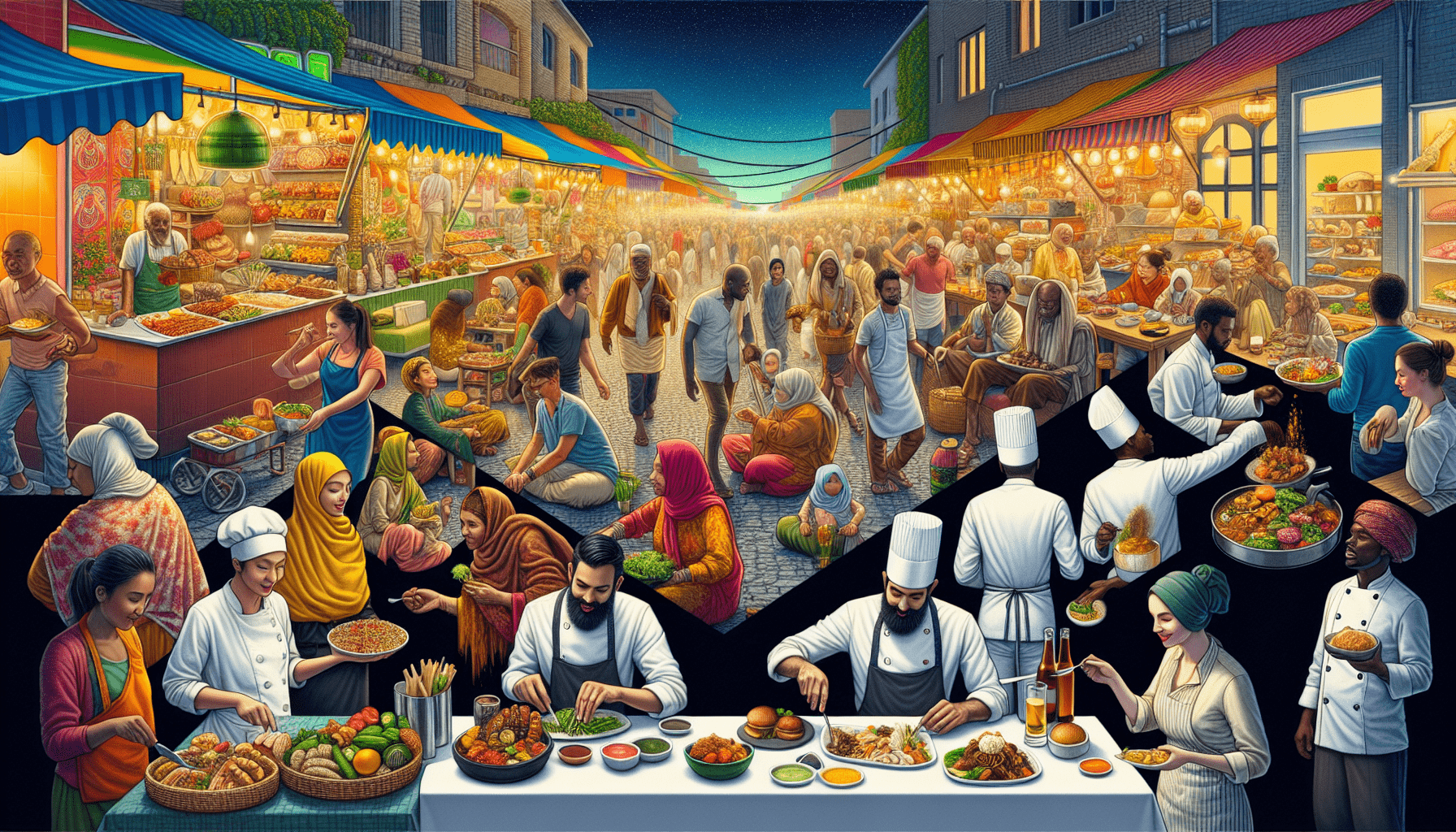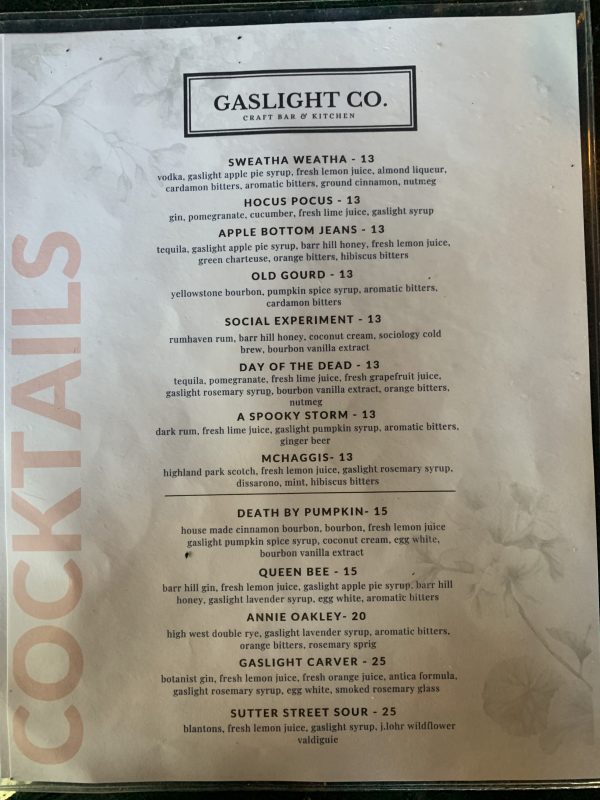In “The Evolution of the Food Tourism Industry,” you’ll embark on a delightful journey through the history and growth of this fascinating sector. The narrative begins with the early days of food tourism, tracing its roots and how it transformed over the years. You’ll discover how pivotal events and key figures, like Garry Taylor, shaped the industry we know today.
The discussion then moves to modern times, highlighting contemporary trends and advancements. Learn about the shifts in terminology, the rebranding efforts, and how the industry has expanded to include a diverse array of experiences and businesses. You’ll leave with a deeper appreciation for how food tourism enriches travel and culture globally.
Origins of Food Tourism
Early Concepts of Culinary Travel
Food tourism has its roots much earlier than you might think. Initially, culinary exploration wasn’t a formalized concept but rather a natural part of human travel. For centuries, explorers, traders, and adventurers discovered new lands and simultaneously encountered diverse and intriguing cuisines. These early instances of culinary travel were driven by necessity and curiosity. Whether it was Marco Polo’s discovery of noodles in China or the spice routes of the Middle East, food has always been an integral part of these journeys, subtly shaping the early concepts of culinary travel.
Key Milestones in Food Tourism History
As we travel further along the timeline, several significant milestones stand out that paved the way for modern food tourism. One key development was the rise of the Grand Tour in the 17th and 18th centuries, where young European aristocrats toured countries like France and Italy to gain cultural experiences, including their cuisine. Fast-forward to the 20th century, the introduction of commercial aviation and international travel packages made culinary exploration accessible to the broader public. The 2000s marked another watershed moment with the rise of the internet and food-centric TV shows, making information about global cuisines more available than ever.
Influence of Cultural Exchanges
Cultural exchanges have significantly influenced the growth of food tourism. Immigration, trade, and globalization have interwoven various ingredients, techniques, and culinary traditions across continents. As people migrated, they brought their native cuisines with them, sparking culinary curiosity in their new homes. This cultural melting pot created enriched dining experiences and fostered a worldwide interest in exploring the origins and stories behind different foods.
From Culinary to Food Tourism
Definition and Scope of Culinary Tourism
Culinary tourism is essentially the pursuit of unique and memorable eating and drinking experiences. Initially, this concept might have seemed to target only those with a gourmet inclination. Culinary tourism can range from dining at illustrious Michelin-starred restaurants to learning how to cook traditional dishes with a local chef. It encompasses a broad spectrum of activities, including food tours, market visits, and wine tastings.
Transition to Food Tourism
Over time, the term culinary tourism started feeling a bit restrictive and possibly intimidating for the average food enthusiast. Hence, the industry saw a natural transition to the term “food tourism,” which appears more inclusive and more straightforward. Food tourism covers a broader demographic and range of experiences, emphasizing the enjoyment and exploration of all kinds of food and drink-related journeys.
Rebranding of Industry Terms
This rebranding from culinary tourism to food tourism brought about a friendlier, more inclusive understanding of the industry. The World Food Travel Association (formerly International Culinary Tourism Association) spearheaded this shift, recognizing the need to demystify what they offer. This change in terminology helped to erase the perception that food tourism was only for the elite or connoisseurs, making it accessible to anyone who loves food and travel.

Role of Associations and Organizations
Formation of the International Culinary Tourism Association
In 2001, the International Culinary Tourism Association was founded, signaling a new era in food tourism. This organization aimed to unify the various elements of the food and travel industries, providing a structured approach to culinary travel experiences. The association served as a hub for resources, research, and networking opportunities, bringing together like-minded professionals.
Evolution into the World Food Travel Association
Recognizing the need for inclusivity and broader appeal, the association rebranded itself as the World Food Travel Association (WFTA). This evolution was not merely a change of name but reflected a more extensive and inclusive mission to promote food tourism globally. This change broadened horizons and welcomed a diverse array of stakeholders into the fold, from high-end restaurant owners to street food vendors.
Global Impact and Community Building
WFTA has had remarkable success in building a global community. With members in over 135 countries, the organization has fostered a collaborative network of food, drink, travel, and hospitality professionals. Their work in publishing guides, research papers, and organizing summits has significantly contributed to the food tourism industry, setting standards, and driving innovation.
Modern Food Tourism Offerings
Gourmet and High-End Experiences
When you think of food tourism, gourmet experiences often spring to mind. These high-end offerings include dining at renowned restaurants, partaking in exclusive food and wine pairings, and enjoying multi-course meals crafted by top chefs. These experiences usually emphasize superior quality, unique ingredients, and a refined dining atmosphere.
Street Food and Local Cuisine
On the other end of the spectrum, street food and local cuisine form the heart and soul of food tourism. These offerings allow you to engage with a culture at its most authentic level. Sampling street food, visiting local markets, and dining in family-run establishments bring you closer to the everyday essence of a locale. These experiences are often more accessible and offer an incredible depth of flavor and cultural insight.
Food and Beverage Festivals
Festivals centered around food and beverages have become hotbeds for enthusiasts eager to explore new tastes. These events often feature cooking demonstrations, workshops, tastings, and meet-and-greets with renowned chefs and producers. Events like the Taste of Chicago, Oktoberfest, or the Bordeaux Wine Festival draw massive crowds, emphasizing the communal joy of food tourism.

Technological Advancements
Online Platforms and Digital Tools
The advent of technology has greatly facilitated the spread of food tourism. Online platforms like TripAdvisor, Yelp, and food blogs allow you to explore reviews, local delicacies, and hidden gems from the comfort of your home. Digital tools and apps offer translations, menus, and booking features, making it easier to navigate and enjoy food tourism destinations.
B2B Services like SA Search
Technological advancements have also streamlined business operations in the food tourism industry. Services like SA Search connect buyers and sellers in the artisanal food and drink sector, revolutionizing how these products are discovered and procured. This innovation boosts efficiency and fosters connections within the industry, creating a more cohesive and vibrant food tourism ecosystem.
Influence of Social Media on Food Tourism
Social media platforms like Instagram, Facebook, and TikTok have become influential in shaping food tourism trends. Food influencers and bloggers share their culinary adventures, inspiring millions to embark on their food journeys. Social media not only serves as a discovery tool but also as a feedback loop where you can share your experiences and recommendations, enriching the community’s collective knowledge.
Certification and Professionalization
Certified Culinary Travel Professional Program
Professional certification has become a cornerstone of the food tourism industry. The Certified Culinary Travel Professional (CCTP) program offers specialized training, equipping you with the skills and knowledge needed for a successful career in food tourism. This comprehensive program covers everything from marketing to cultural sensitivity, setting you on the path to becoming an expert in the field.
Importance of Professional Certifications
Professional certifications lend credibility and authority. They assure potential employers and clients that you possess a verified level of expertise and commitment to the industry. For tour operators, travel agents, and even chefs, certifications can provide a competitive edge and open up new career opportunities.
Impact on Career Development
The impact of professional certifications on career development is significant. Not only do they provide valuable knowledge and skills, but they also offer networking opportunities and industry recognition. Certified professionals often find it easier to land jobs, secure promotions, and even start their own businesses, thus enhancing their overall career trajectory.
Economic Impact of Food Tourism
Contribution to Local Economies
Food tourism substantially contributes to local economies. Tourists spend money on dining, tours, and local products, injecting valuable funds into the community. This influx of revenue helps sustain small businesses, promotes local hiring, and can even lead to infrastructural improvements aimed at accommodating more tourists.
Employment and Business Opportunities
The rise of food tourism has created a plethora of employment and business opportunities. From tour guides to chefs, restaurant owners to food producers, many people benefit from the industry’s growth. Additionally, related businesses such as hotels, transportation, and event planning also see a positive impact, fostering a thriving economic ecosystem.
Case Studies of Successful Food Tourism Initiatives
Numerous case studies exemplify the success of food tourism initiatives. For example, the town of Parma in Italy leveraged its reputation for Parmesan cheese and prosciutto to turn itself into a must-visit destination for food lovers. Similarly, the wine tourism model in Napa Valley, California, has proven to be highly successful, attracting millions of tourists each year and generating significant income.
Challenges and Opportunities
Navigating Cultural Sensitivities
One of the challenges faced in food tourism is navigating cultural sensitivities. Food is deeply ingrained in cultural identity and traditions, so it’s essential to approach culinary experiences with respect and understanding. Missteps can lead to cultural offenses, underscoring the importance of cultural sensitivity training in the industry.
Sustainability in Food Tourism
Another pressing challenge is sustainability. The environmental impact of food tourism, from carbon footprints to food waste, cannot be ignored. Opportunities abound for implementing sustainable practices, such as promoting local sourcing, reducing waste through better planning, and encouraging eco-friendly travel options.
Future Trends and Predictions
Looking ahead, the future of food tourism is bright and full of potential. Trends like plant-based diets, the farm-to-table movement, and immersive culinary experiences are likely to gain traction. Technological innovations and increasing global connectivity will continue to shape the industry, making it more accessible and diverse.
Case Studies and Success Stories
Regional Success Stories
Regional success stories offer valuable insights into the potential of food tourism. For instance, Thailand’s street food scene has become globally renowned, attracting millions of food travelers each year. This success stems from the authenticity and richness of local flavors, combined with strategic marketing and tourism-friendly policies.
Impactful Global Events
Global events like Expo 2015 in Milan, which focused on “Feeding the Planet, Energy for Life,” have significantly impacted food tourism. These events bring attention to the host country’s culinary offerings and create opportunities for lasting economic and cultural benefits.
Innovative Food Tourism Models
Innovative models within food tourism are constantly emerging. From food trucks offering global cuisines to Airbnb experiences where you can cook with a local family, these inventive approaches add layers of enjoyment and engagement to culinary travel, appealing to a wide range of preferences and interests.
Conclusion
Reflection on the Industry’s Growth
Food tourism has come a long way from its early roots and has grown into a diverse, inclusive, and economically significant industry. The evolution from culinary tourism to a more encompassing food tourism reflects this growth, broadening the horizons for everyone who enjoys unique and memorable dining experiences.
The Future of Food Tourism
The future of food tourism looks promising, with advancements in technology, increasing global connectivity, and a growing emphasis on sustainability. As the industry evolves, it will continue to offer new and exciting opportunities for exploration, learning, and enjoyment.
Encouraging Participation and Innovation
For you, whether you’re a traveler, a professional, or an aspiring entrepreneur, food tourism presents boundless possibilities. Embrace the experience, support local businesses, and contribute to the industry’s growth. Your enthusiasm and innovation will play a crucial role in shaping the future of food tourism, making it richer and more rewarding for all involved.






